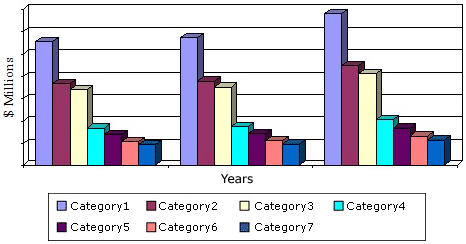REPORT HIGHLIGHTSThe global market for food additives should reach $43.3 billion by 2021 from $36.7 billion in 2016 at a compound annual growth rate (CAGR) of 3.4% from 2016 to 2021. This report provides: - An overview of the global markets for food additives
- Analyses of global market trends, with data from 2015, 2016, and projections of compound annual growth rates (CAGRs) through 2021.
- Definition and delineation of the food additives field by classifying these additives into workable categories, and technically describing these major categories and the most important individual products that compete for places in the market
- Discussion of important factors in the marketing of food additives, including distribution channels, impact of large food processors, and end-user selection criteria
- Elaboration of the competitive atmosphere among food additive suppliers, both basic producers and formulators/distributors, including their relationships with end-user food processor companies
- Discussion of environmental and regulatory considerations affecting food additives and their impact on products and markets
- Profiles of major players in the industry
SAMPLE FIGURE GLOBAL MARKET FOR FOOD ADDITIVES BY TYPE, 2015-2021 ($ MILLIONS) 
REPORT SCOPEDepending on who is doing the categorization, there can be a large number of food additive categories, and no report can attempt to cover them all, especially low-volume exotic additives with small markets. In this study, the focus is on the most important classes of food additives, both the older and mature products, such as acidifiers (acidulants) and colorants, as well as newer products such as the large “calorie-reduction (CR) agent” segment, which includes fat replacers and non-nutritive sweeteners. The scope of this study is limited to those chemical products and materials specifically considered food additives. Two terms describe the type of materials considered here: Direct food additives, which means those intentionally added to food, as opposed to chemicals that, for example, can migrate into food from packaging materials. The latter are called indirect food additives and are outside the scope of the report. Non-nutritive food additives, as opposed to food ingredients. The simplest way to differentiate these categories is that additives tend to improve the food but do not add nutritional value. Therefore, the report excludes caloric sweeteners such as sugar and high-fructose syrups, mineral and vitamin supplements, caloric flavorings like butter and chocolate (usually added in larger than trace amounts) and other food ingredients.
Because food additives are for the most part, high value-added, specialty chemicals, often produced to an end user’s specifications, volumes in pounds are less meaningful than market values in dollars. For this reason, all market estimates and forecasts are in constant 2015 U.S. dollars and are based on manufacturers’ total revenues. Because of the inherent imprecision in market forecasts for dynamic and proprietary markets such as food additives, all values are rounded to the nearest million dollars. Due to this rounding, some forecast values might not exactly agree with the compounded annual growth rate (CAGR) percentages that accompany the dollar forecasts. This discrepancy will be most apparent in small markets where five-year growth, when rounded to the nearest million dollars, does not appear to fit the projected CAGR. ANALYST’S CREDENTIALS Jason Chen has been an analyst and consultant for the composite, fiber, textile and energy industries for a decade. He has been a regular writer or contributing editor addressing composites manufacturing for the American Composites Manufacturers Association (ACMA), International Fiber Journal, Filtration News, Platts Emission Daily, Vision Systems Design, Pesticide and Toxic Chemical News, China Textile Academy, China Chemical Fibers and MobileTex. He has authored three books: Asian Automotive Textiles: Opportunities and Challenges for Leading Producers; China Technical Textiles: Key Producers and Market Trends to 2015; and China’s Chemical Fiber Producers. He is also the author of many BCC Research market research reports, including AVM077B Tire Reinforcement Materials: Technologies and Global Markets, PLS050D Global Markets and Technologies for Bioplastics, and PLS052A Global Market for Polyolefins. Currently he is the chief scientist of a China-based company endeavoring to reduce China’s air and water pollution through filtration and separation solutions. |



